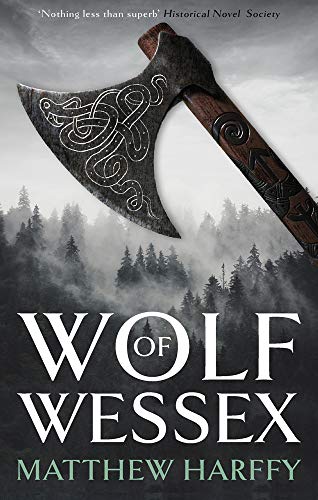Wolf of Wessex
To anyone who is a follower of Matthew Harffy’s Bernicia Chronicles, The Wolf of Wessex is a significant departure, although it retains many of the same features, including, of course, being a good story.
The protagonist, Dunston, is an aged warrior, though his age is never made explicit. What comes across are the ravages of age. Once a great warrior, he has withdrawn from the world and made his life as a hermit, sharing it only with his dog Odin, deep in the forests of Wessex. His life might have continued in this way, had he not been dragged back into action when he discovers the mutilated body of a brutally slain trader. Shortly afterwards Dunston discovers the dead man’s daughter, Aedwen, cowering from him.
The unlikely pair form a bond which grows only slowly as Dunston tries to make up his mind whether to withdraw once more, or to step up to the challenge. He is a warrior, so of course only one decision can be made. Dunston and Aedwen travel through the wild countryside of Wessex, losing his dog along the way, gradually exposing those who had killed her father. The story is peopled with a host of fascinating characters. The ending is both exciting and satisfying.
The book does not flaunt its clearly extensive research, but the research colours almost every page. At times it is almost as if the tale is told by someone who lived during the 9th century.
The Wolf of Wessex is advertised as a stand-alone novel, but there is room, should Harffy wish it, to extend the story of Dunston and Aedwen into further books. I, for one, would welcome it.










